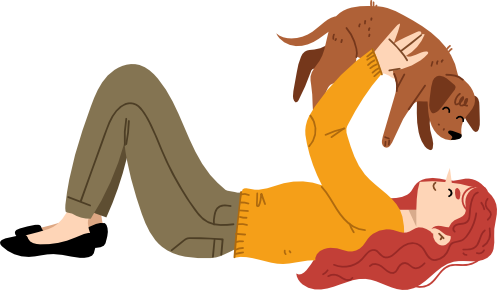Many puppies explore the worlds with their mouths. But what should you do if your puppy actually eats a lot of dangerous things? Or what if your dog doesn’t grow out of it and still eats everything as an adult?
We’re going to tackle a common behavior problem in today’s Ask a Behavior Consultant: dogs who eat everything at their own peril. Our reader asked,
“My dog eats absolutely everything. Mostly things outside is what I’m concerned with. He had choked on many sticks and chunks of grass. Please help!”
– Sincerely, Chow Hound
If you’re dealing with a dog who eats everything, be sure to check out the following resources from Journey Dog Training:
- Teach your puppy to stop eating everything
- Exchange Games (#6 on the list)
- It’s Yer Choice (#2 on the list)
- Our email and text support subscription packages.
- Our 15-minute and one-hour phone consultations or video training sessions.
Experienced readers won’t be surprised to hear that the dog in question here is a retriever. Retrievers are notorious for picking things up with their mouths – that’s their job! It’s also pretty common for that instinct to go too far.
While grass-eating might “just” cause some gross poo or a bit of vomit, it can actually be really dangerous for dogs to eat non-food objects. Socks and rocks and other non-food objects can cause intestinal blockages that require expensive and dangerous surgery.
After a few surgeries, your dog can even run out of intestine (the vets don’t have enough left to stitch together because they remove a bit each time they operate). These dogs can die.
Yes, dogs eat gross stuff. But goose poop and rotten pigeon wings are probably less dangerous for your dog than underwear or sticks. There’s a difference between “a gross dog doing gross dog things” and a dangerous habit of a dog who eats everything!
How to Help a Dog Who Eats Everything
- Management. While we’re in training, this dog isn’t allowed to be anywhere near anything that he might eat. This will mean using leashes (with a harness if needed to prevent choking) and muzzles and crates and baby gates, depending on where you are. Muzzles can be a huge help for this problem!
- Many muzzles make it very hard for your dog to pick up things from the floor. Get your dog a comfy basket muzzle that has plenty of bars around the front of his mouth.
- Give your dog other stuff to do. Your dog might just be eating things because it’s fun, and there’s nothing more fun to do. Give your dog puzzle toys or engage him in training games whenever you’re around his favorite stuff-eating spots. He’ll learn to engage with you and toys rather than eating random stuff.
- Reward alternate behaviors. There’s a chance that your dog has learned that putting stuff in his mouth gets him attention from you. Try ignoring him if he’s eating relatively harmless things (like grass – but be careful with pesticides or unknown plants). If he starts doing something else when outdoors, reward that with treats, petting, praise, or toys. Anything other than eating stuff can be a reward-able behavior at this point!
- Teach a drop it. This can save your dog’s life. I teach a drop it using the exchange game method. Start practicing this right away.
- Teach a leave it. I teach leave it using the game It’s Yer Choice. Here’s a video demo.
- Get a gut health checkup. Compulsive eating of things can indicate digestive upset or gut imbalance. Talk to a vet who’s experienced in gut health and nutrition (not necessarily your general practice vet).
Some dogs who compulsively eat things need to be managed with muzzles for their whole lives. Most don’t need that level of care – training will do the trick.
But if your dog has already had a few surgeries or other close calls, it’s far better to use the muzzle and keep everyone safe.

